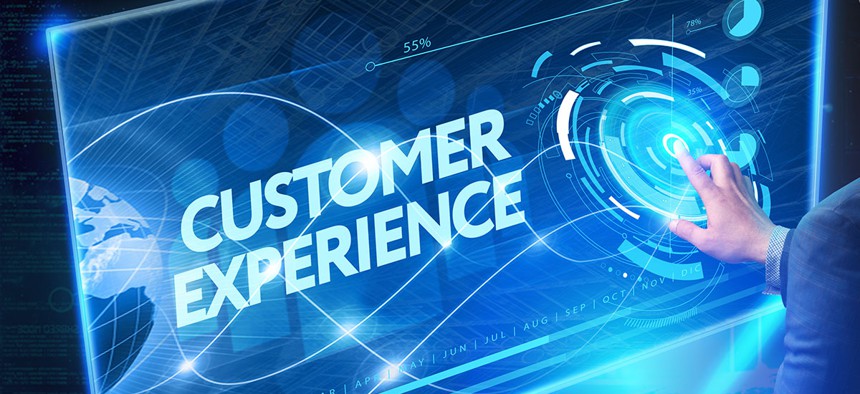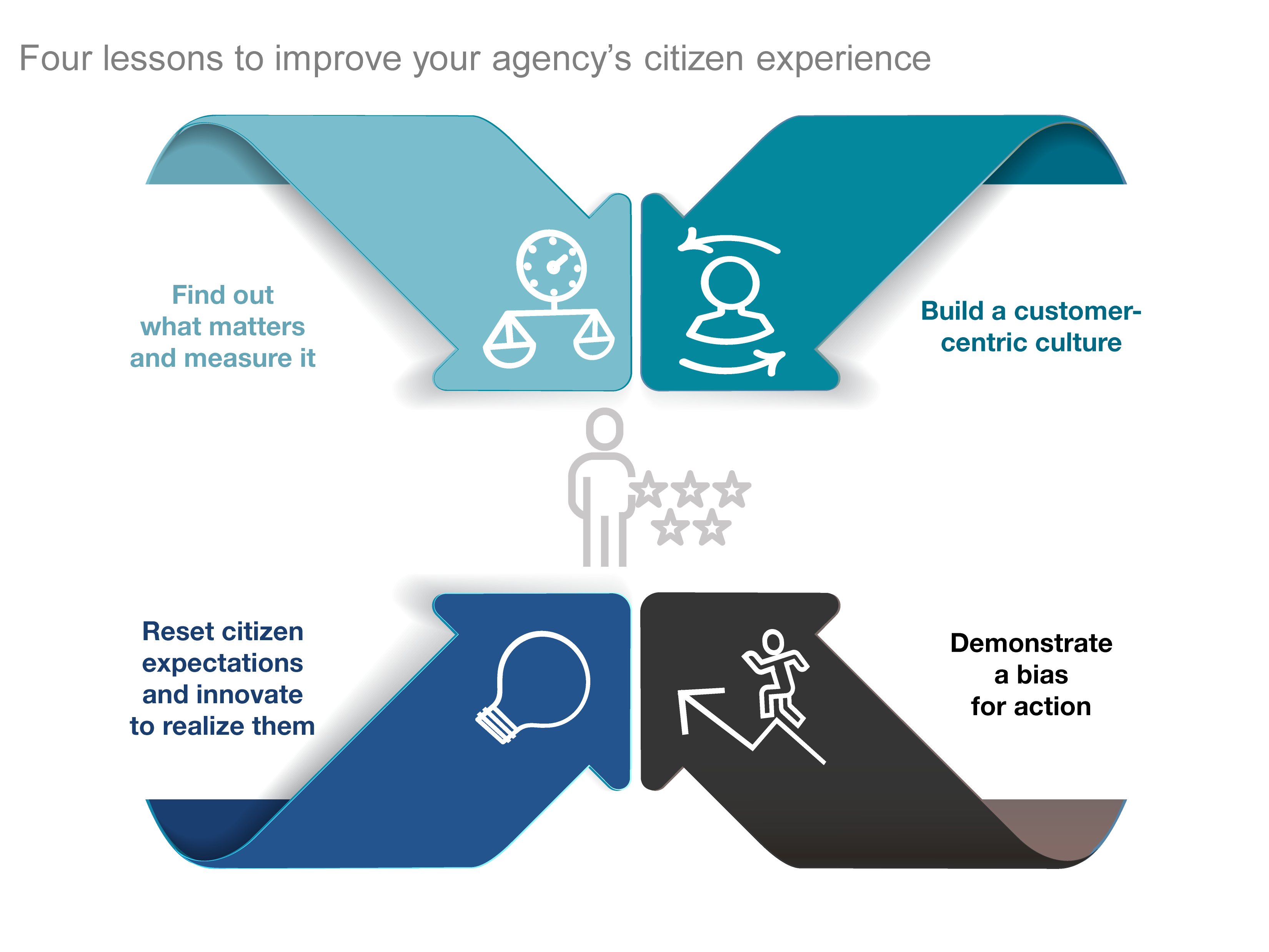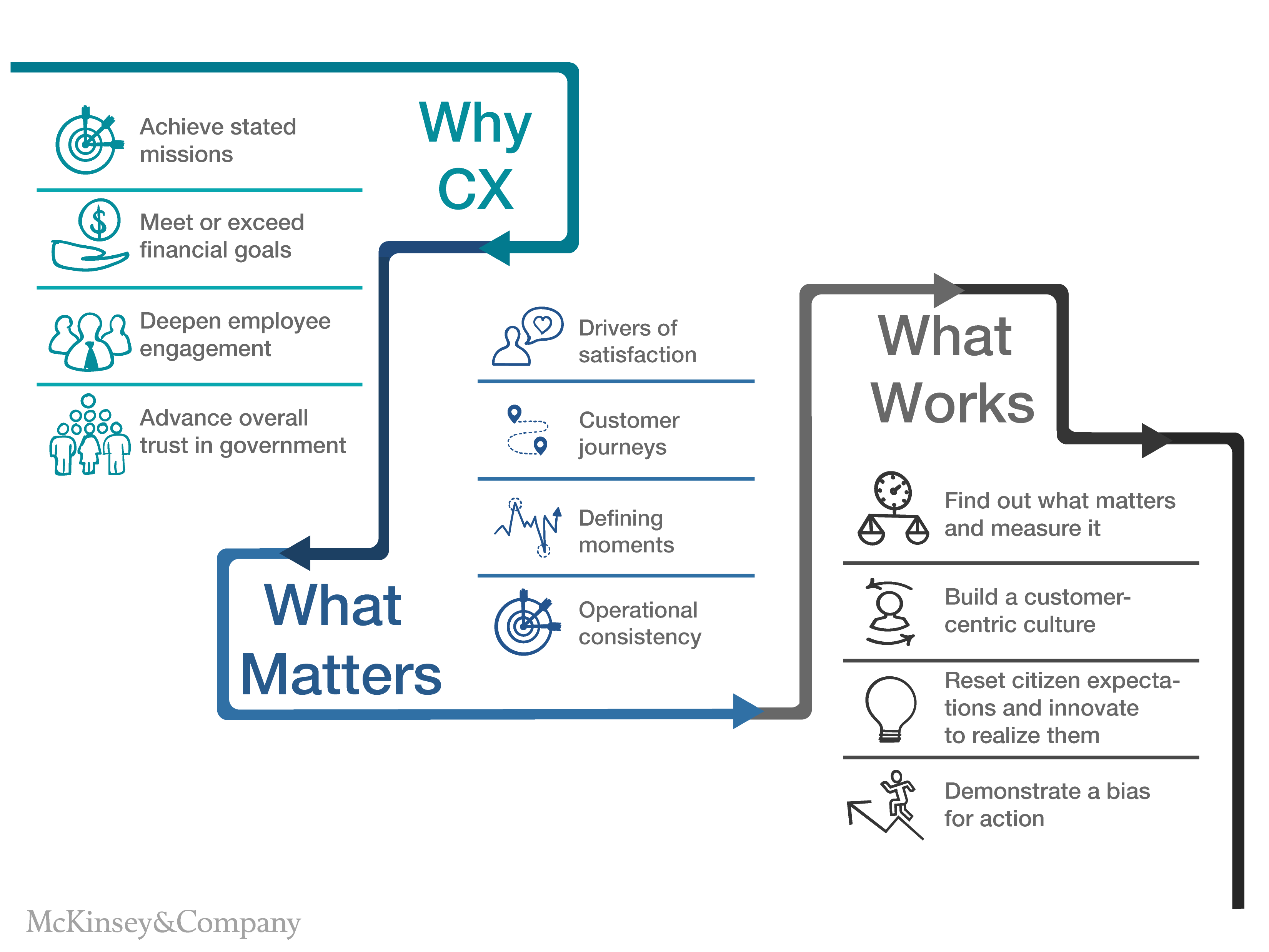4 Lessons to Improve Your Agency’s Citizen Experience

Den Rise/Shutterstock.com
Tips that work from agencies that have done it.
Tony D’Emidio is a partner in McKinsey’s Washington, D.C., office, and Kari Hernandez is an engagement manager in the Stamford office.
In our two previous articles, we explained four keys to understanding what matters to citizens and how this knowledge can help government agencies achieve their missions and financial goals while increasing employee engagement and public trust. In this finale of our three-part series, we share four practical lessons learned from government agencies that have set out to transform the citizen experience.

1. Find out what matters and measure it.
Agencies that lack a clear understanding of what matters most to their customers risk wasting scarce time and resources on things that don’t. Avoiding these pitfalls doesn’t necessarily take a lot of money or advanced techniques. In 2010, for example, the Education Department's Federal Student Aid program wanted to learn “what matters” to the neediest students. Instead of using long surveys, complex statistical models, or specialized skills, the FSA program started where its audience was: social media.
By creating a presence on Facebook and Twitter, FSA connected with students in the way most natural to them. Basic Google text analytics helped to identify the application and repayment journeys as important—and in need of simplification. This relatively straightforward analysis showed FSA what truly mattered for accomplishing its mission, without requiring a large investment.
Armed with the knowledge of what matters, an agency can build a measurement system to take the pulse of CX constantly. The Veterans Affairs Department, for example, developed a central measurement system that provides insights to all teams undertaking CX efforts. An objective, centralized CX organization (which doesn’t itself deliver any services to customers) maintains the system, and external support ensures it is statistically relevant and methodologically sound. As a result, VA has a robust CX measurement system that serves the entire organization and, ultimately, the people who matter most to VA: veterans.
2. Build a customer-centric culture.
The actions, behavior and attitudes of frontline employees heavily influence every customer’s experiences with the federal government. Not surprisingly, many agencies have found creating a customer-centric culture is critical to delivering improved CX.
Leaders looking to inspire such a culture are explicit and relentless in communicating and demonstrating the link between employee behavior and the citizen experience. Building that conviction often starts with a simple, crisp statement of intent: a shared vision and aspiration.
At the State Department’s Bureau of Consular Affairs, for example, this shared purpose is reflected in the rallying cry, “No missed trips!” The slogan converts the task of fulfilling passport requests into the shared purpose of helping people to arrive safely and expeditiously at their destinations. It not only focuses the organization on what matters to its customers but also empowers employees to take action aligned with the end goal, not just with their assignment or task at the moment.
Such a vision from the top is essential but insufficient; to be effective, all employees (from management to the front line) must understand and believe in the vision. Some agencies have engaged employees in a dialogue that helps them to learn from each other and develop an individual perspective rooted in CX.
At the Social Security Administration, for example, programs like Why I Serve and the Commissioner’s Challenge ask frontline employees to offer a personal view about what matters and ideas about what they would do if they were in charge. These programs ensure employees understand and support the vision, while setting the expectation they will make citizen experience a core part of their daily work. Furthermore, frontline employees usually know better than their bosses what matters most to the citizen. Bringing them into the discussion is essential.
3. Reset citizen expectations and innovate to realize them.
It’s been said that “satisfaction equals expectations minus reality.” One of the simplest, most powerful tools agencies have to drive CX improvements is to manage customer expectations proactively. When Internal Revenue Service customers, for example, complained about what they saw as its refund-processing delays, the agency simply changed its guidance: instead of promising a two-day turnaround (the mean processing time), the IRS adjusted its communications to reflect the processing time required for the majority of refunds (six days) and created an online tool for customers to track where they were in the process. The number of complaints and inquiries fell almost immediately, without changing the supporting business processes.
Meeting customer expectations often involves a more comprehensive approach to redesigning customer journeys. Innovating to transform the customer’s end-to-end experience can take many forms; leading agencies often incorporate digital and design thinking into their efforts.
For example, the National Park Service embraced an agile request-for-proposals process when it created Recreation.gov: it posted RFPs publicly for comment by users, hosted a “hackathon” to get insights quickly and cost effectively from its wealth of data, and used customer feedback to test changes early and often. The anticipated result of this agile contract: an ability to support the ever-evolving needs of customers seeking recreation and adventure.
4. Demonstrate a bias for action.
A core element of the citizen experience is changing mindsets up and down the organization. However, from our work with government leaders we’ve heard, as the saying goes, the key is not to think your way into acting differently but to act your way into thinking differently. Agencies struggling to figure out where to start should just start anywhere they see opportunity, even—and sometimes especially—if it is small. Demonstrating visible action to customers and employees is essential for building momentum.
For example, the National Weather Service recognized its communications frustrated many customers, who had difficulty understanding the specialized terminology. When the agency sought to render technical or official documents in plain language, it also addressed another bad habit by restricting the use of ALL-CAPS type, which is difficult to read and made customers feel the agency was yelling at them. This seemingly small change helped build trust with customers and gave the organization confidence it could change.
Many leaders of federal agencies emphasize the importance of getting tangible wins on the board early, no matter how small. Iteration is important, too—the likelihood of getting something right the first time decreases as its complexity increases. Adopting the mantra of “test early, learn quickly, iterate often” with both your customers and your employees will earn you the right to solve progressively bigger problems. One leader at the State Department described her experience running part of a CX transformation: “It’s like a marathon. You look back from mile 20 and are amazed, but the whole time you’ve been taking small steps.”
Most public servants join the government to make the world better and to help their fellow citizens. Delivering a better citizen experience requires understanding what matters, building a customer-centric culture, innovating to meet clear and achievable expectations, and just starting somewhere—even if resources are limited. The ideas in the three articles of this series are intended to help government leaders develop their own CX vision and to help them start by taking that small first step.



